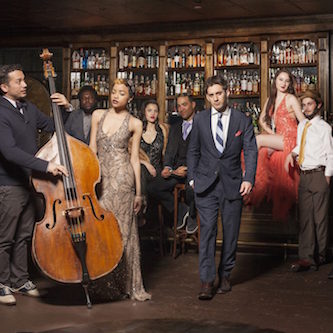Postmodern Jukebox
Historical Misappropriation
The work of Scott Bradlee & Postmodern Jukebox has been viewed on the ensemble’s YouTube channel well over a hundred million times. Most of those doing the viewing, however, are not fully aware of the method to Bradlee’s madness.
On the surface, the method is video clips of full-band performances (that’s Bradlee on piano) shot in the bandleader’s living room with a single stationary camera. The madness: pop hits of the present performed à la pop hits of the past. Miley Cyrus’ “We Can’t Stop” assayed as a doo-wop number; Macklemore and Ryan Lewis’ “Thrift Shop” tricked out in flapper jazz; Sam Smith’s “Stay With Me” rendered a 1940s big-band standard.
In fact, Bradlee’s method runs deeper. He’s educating his audience about 20th-century song styles; he’s commenting on the elasticity of the pop form; he’s confounding cultural context; he’s uniting generations; he’s breaking the rules. He’s manifesting postmodernist ideas in his approach to production and business as well as music. But as far as the fans are concerned, it’s just fun (and sometimes funny). Bradlee himself will tell you, simply, “I reimagine a song in another style because I want to hear it that way.”

